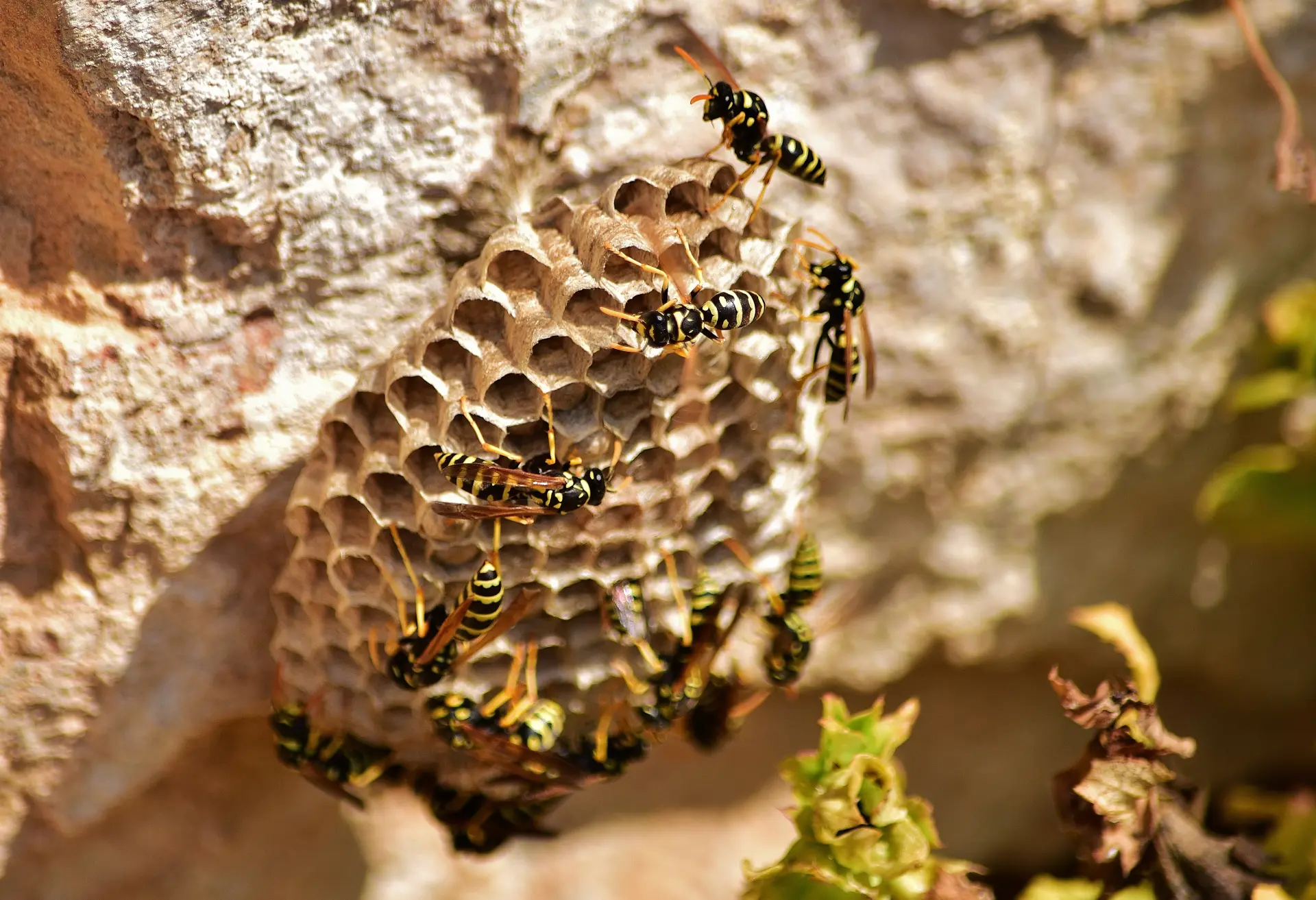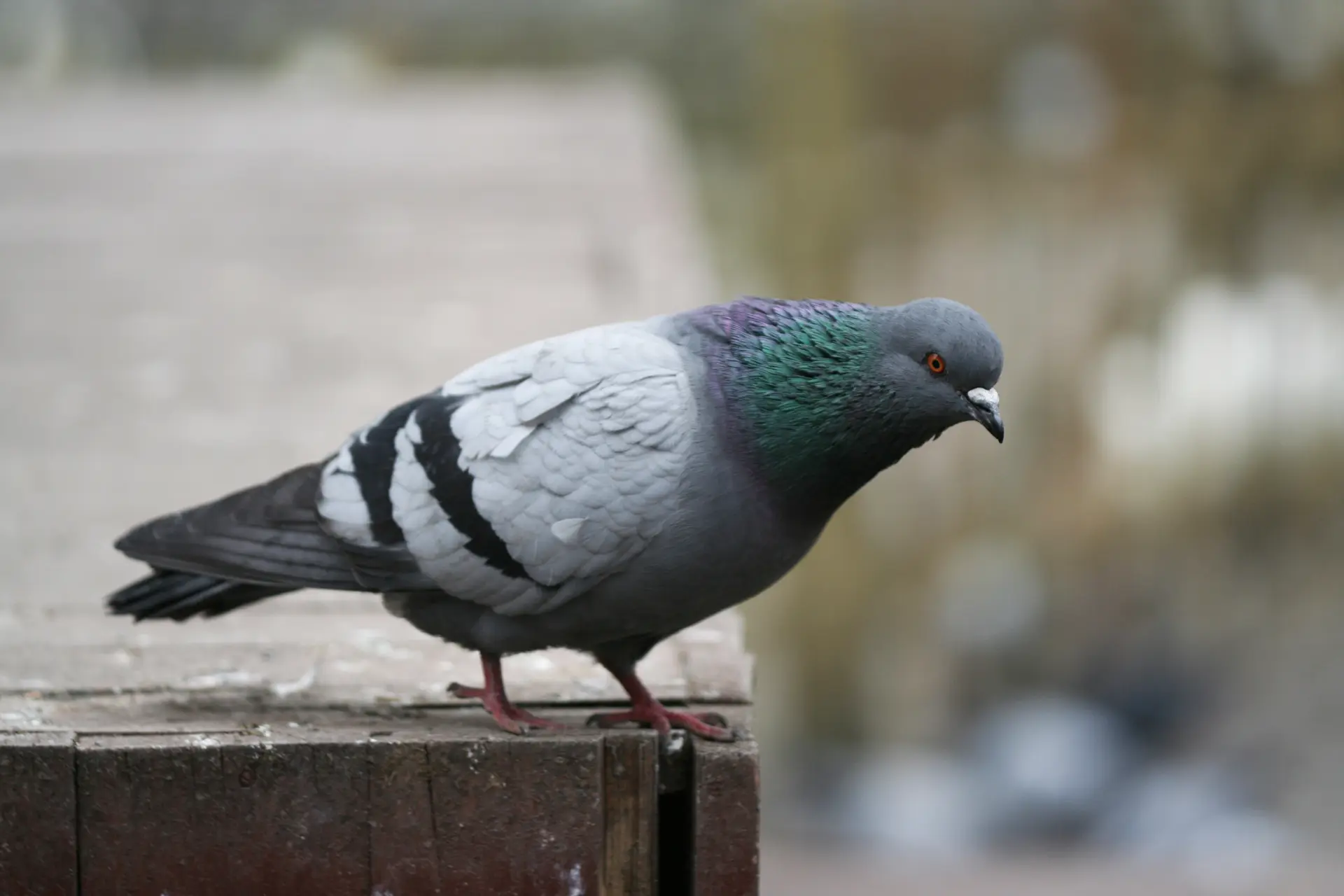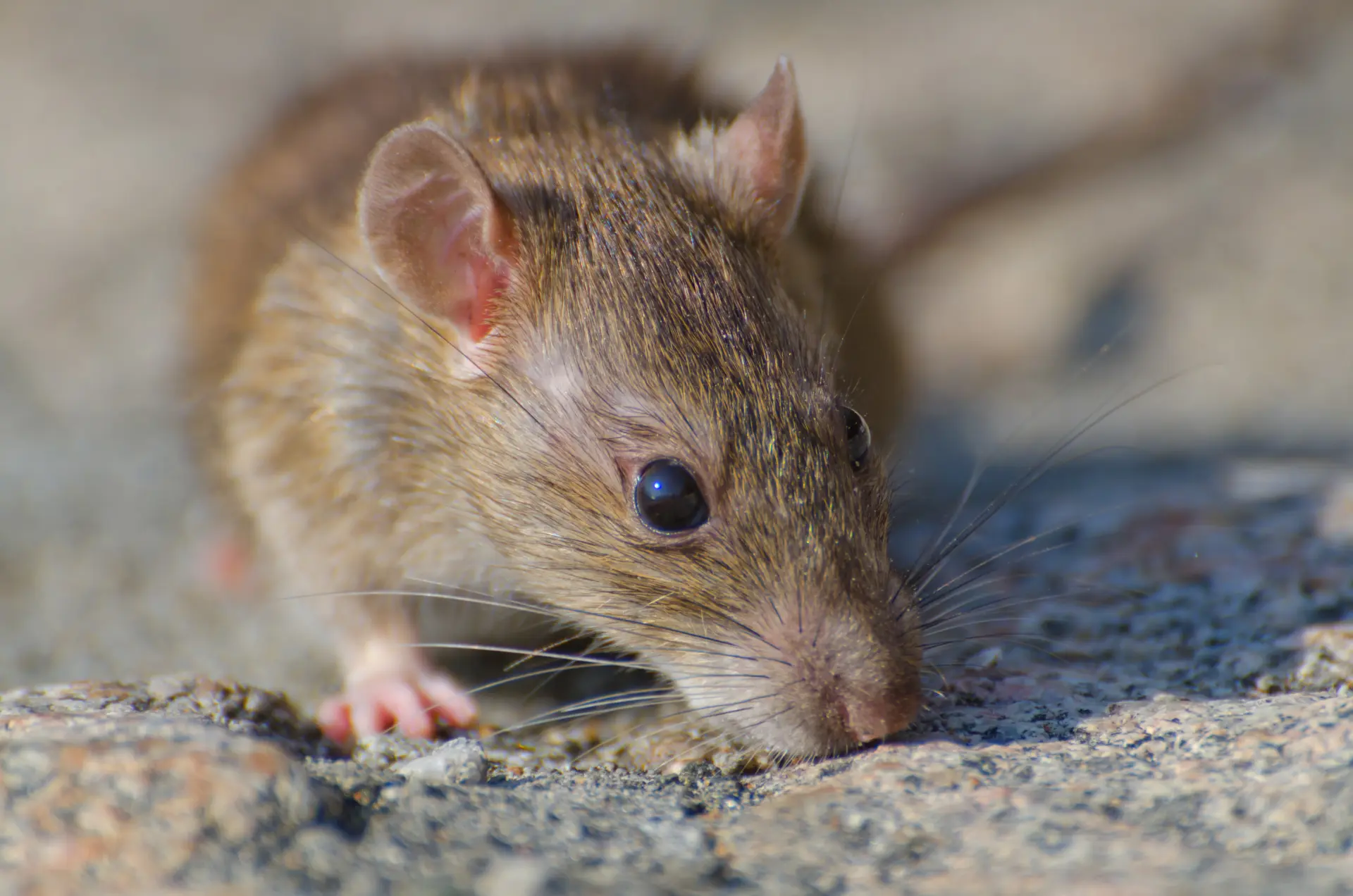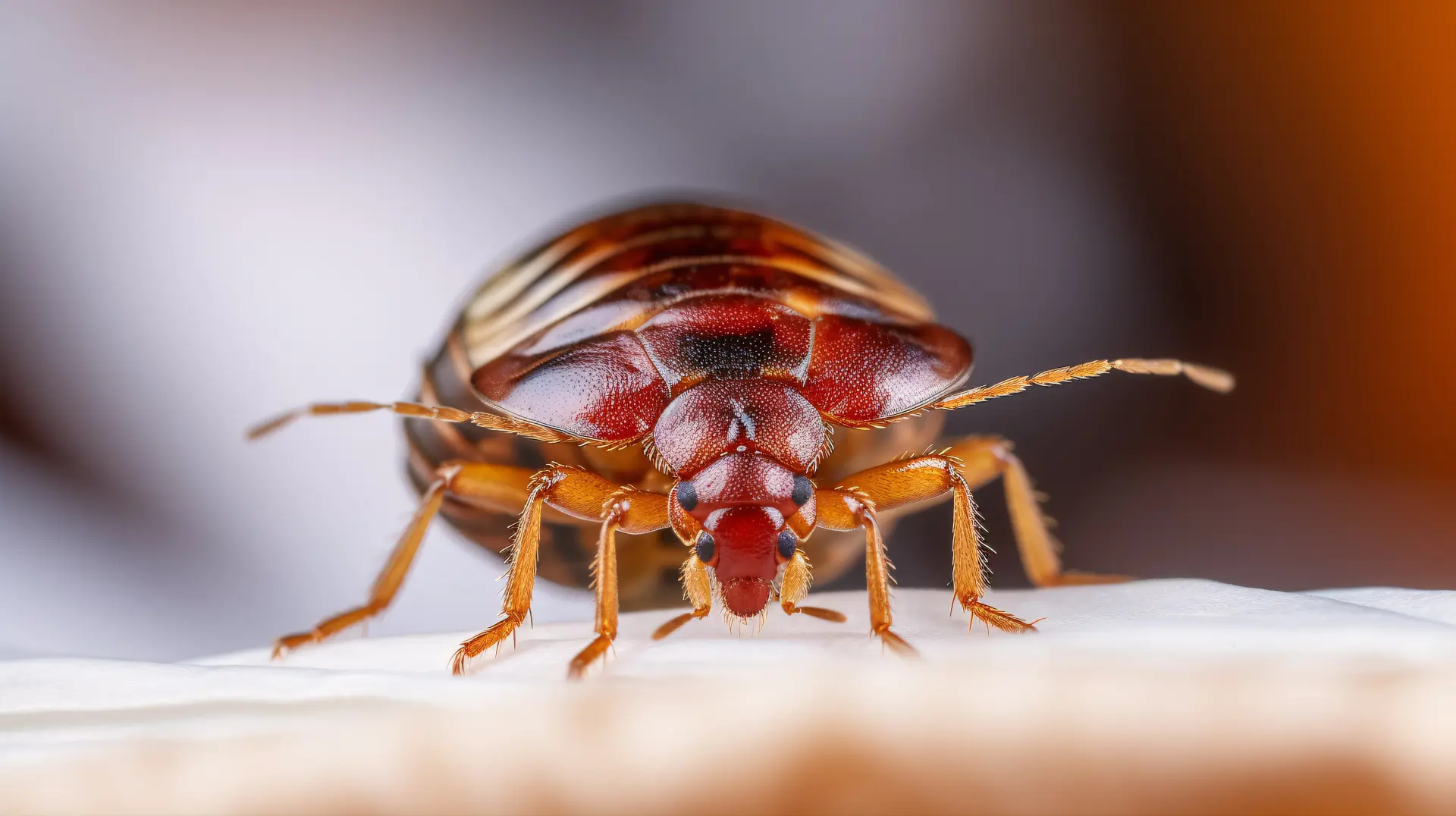Learn how to identify a wasp nest with our expert guide. Recognise nests early and stay safe with tips on spotting different types of wasp nests across the UK.
What Does a Wasp Nest Look Like?
A wasp nest is typically made of a papery substance created by wasps from chewing on wood fibres mixed with their saliva. The nest has a honeycomb-like design and is often grey or brownish in colour, depending on the species of wasp.
They generally consist of several layers of hexagonal cells that are used to house the wasp larvae and are arranged in a series of layers like a beehive. The outside of the nest is smooth and has small holes in the surface. The nests are usually about the size of a football, but larger nests can sometimes grow to over a foot in diameter.
Ground nests may be harder to detect, but you can often spot them by the frequent movement of wasps near the ground. Wasps tend to be more aggressive when their nests are disturbed, so it's important to be cautious when identifying a nest.
Common Places to Find Wasp Nests
One of the most common locations for wasps to build their nests is in trees and shrubs. Wasps prefer these locations because they provide natural shelter from the weather and are often far enough from human activity to avoid disturbances. The nests are usually built in the tree branches, particularly in hollow spaces or between branches, where the nest is hidden from view and concealed from predators.
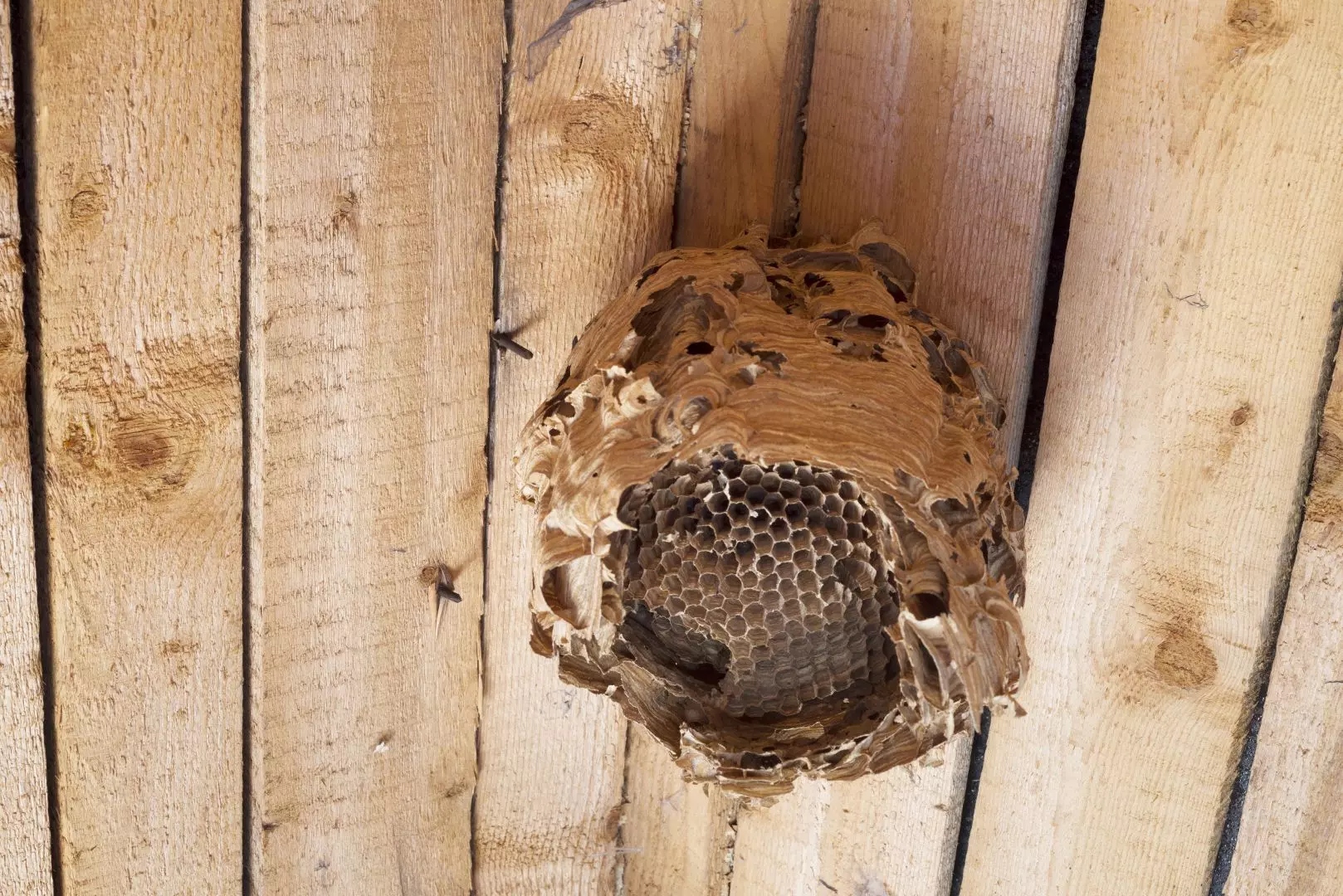
Wasps frequently build their nests in or around the eaves of buildings, particularly in the spaces where the roof meets the walls, as these areas are often protected from the elements.
Loft spaces are another common site for wasp nests, particularly if there is a means of entry through vents or openings. In these spaces, wasps can find a safe environment to create their nests and lay eggs.
While less common, some species of wasps build their nests underground. These nests can be more difficult to spot, but the wasps often create small entry holes near the surface, where they access their nest and search for food.
Different Types of Wasp Nests
The most common type of nest found in the UK is created by the Vespula genus, which includes the common wasp and the German wasp.
These wasps build large, oval-shaped nests that are often found in tree branches, under eaves or in garden sheds. The nest typically has a smooth, grey-brown exterior, with hexagonal cells arranged in a series of layers.
Yellowjackets also build nests made from a similar papery substance,
however, their nests tend to be smaller and more compact. Yellowjacket
nests are commonly built in ground cavities, such as animal burrows or
spaces under decks or sheds.
Hornets are the largest wasps in the UK, and their nests are considerably bigger than those of other species. These nests are typically built in hollow trees, wall cavities, or roofs, where they are well-protected. Hornet nests are round or oval-shaped and can grow to the size of a basketball. While hornet nests are less common than those of paper wasps or yellowjackets, they pose a greater risk due to the aggressive nature of hornets.
What to Do If You Find a Wasp Nest
The first step is to identify where the nest is and determine whether it poses a threat or not. If the nest is in a high-traffic area that's close to children, pets, or entrances to the house, it may need to be removed quickly.
If the nest is in a less accessible area, you can choose to leave it undisturbed, especially if it's smaller or newly established. However, if you spot a wasp nest, avoid disturbing it. Don't swat at the wasps or try to remove the nest yourself, as this can trigger the wasps, causing them to swarm and sting in retaliation.
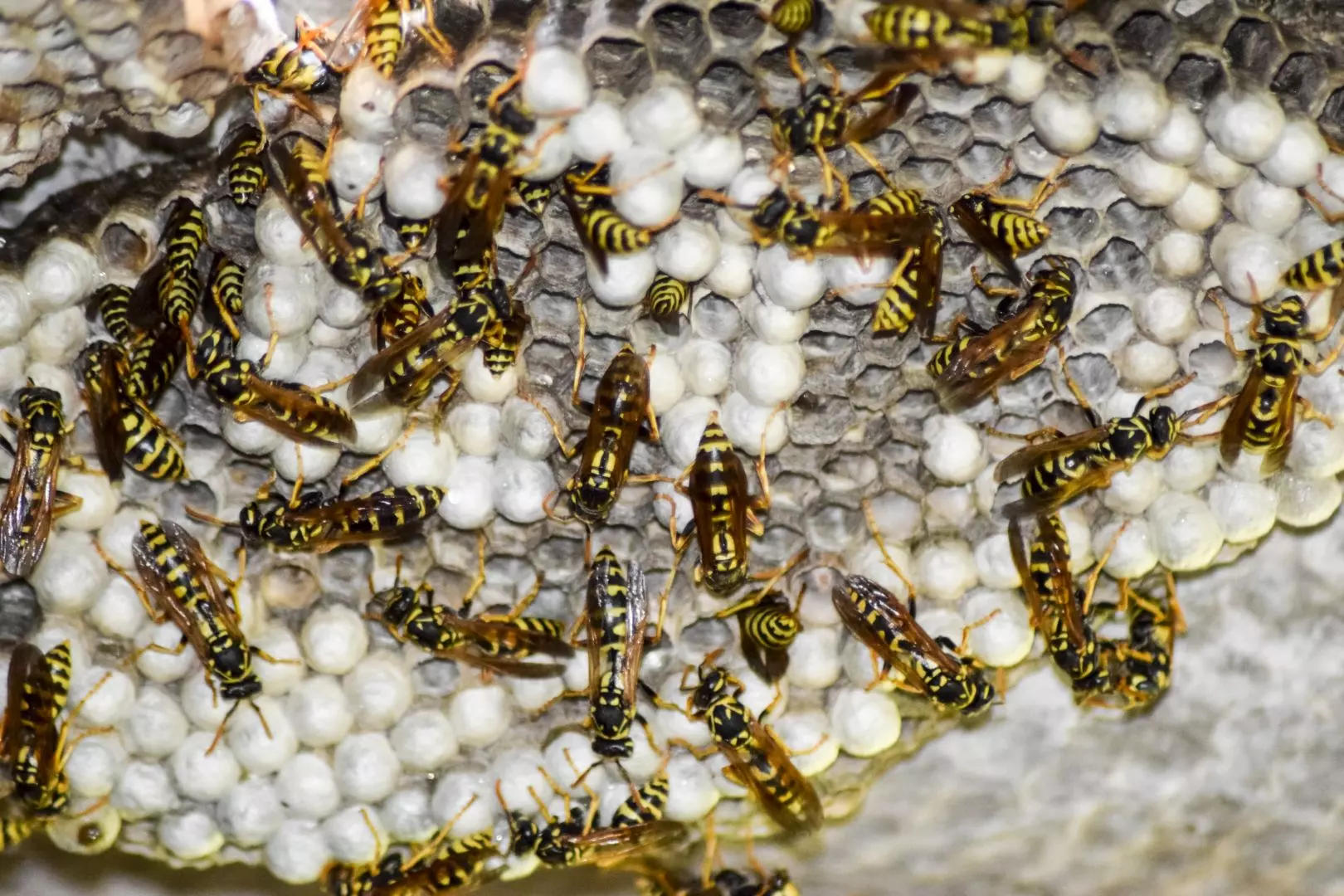
If you do get stung by a wasp, clean the sting with soap and water to reduce the risk of infection before applying a cold compress to alleviate any swelling and pain.
Ibuprofen or paracetamol can help manage discomfort, however, if you experience severe reactions like difficulty breathing, it's crucial to get immediate medical attention.
It's best to leave the nest removal process to professionals, as they have the expertise to manage the situation safely. By taking the right precautions and acting quickly, you can avoid the risks associated with wasp nests and keep your property safe.
James Dighton Pest Solutions provides professional wasp nest control services across Peterborough. We ensure that wasp nests are removed safely and effectively from homes and businesses.

